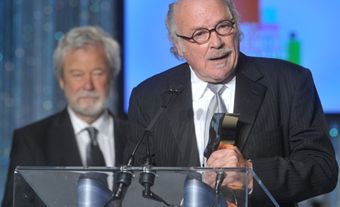Labyrinth
Labyrinth (1967) was a multi-chamber installation that was the undisputed hit of EXPO 67 and the crowning achievement of the NATIONAL FILM BOARD OF CANADA (NFB). Conceived and designed by Roman KROITOR, edited by Tom DALY, and directed by Hugh O'Connor and Colin LOW, with the participation of Wally Gentleman and many others, Labyrinth consisted of 3 chambers based on the Greek myth about Theseus's descent into the labyrinth to kill the Minotaur. The intention of the Labyrinth was to tell significantly, in a 45-minute film, the essential story of humankind. As Theseus, the hero, advanced through the mysterious passageways of the labyrinth, so humans throughout time have been exploring the planet Earth and their environment - from caveman to spaceman.
The first chamber had screens on the floor and on the walls and gave the spectators a sense of participation comparable to dropping out into space, with the world left far below. The second chamber was a transitional passageway formed by mirrored prisms that, when the lights went out, blinked like a million stars. The third chamber was an auditorium with 5 projectors and screens where the symbolic struggle was played out. Several teams of NFB cameramen shot film for this section across the globe. The 5 films were later compiled into a single flat-screen version, which was released as In the Labyrinth in 1979. The installation was the source of inspiration for the development of the IMAX projection system.

 Share on Facebook
Share on Facebook Share on X
Share on X Share by Email
Share by Email Share on Google Classroom
Share on Google Classroom


